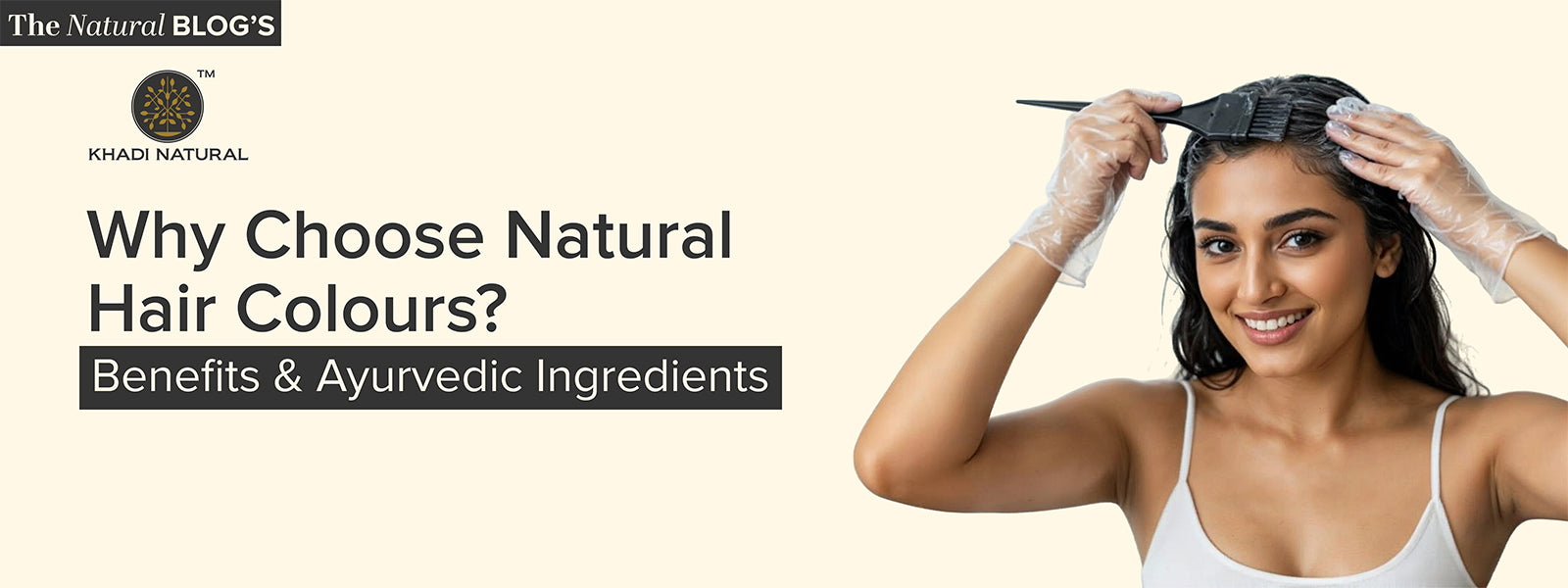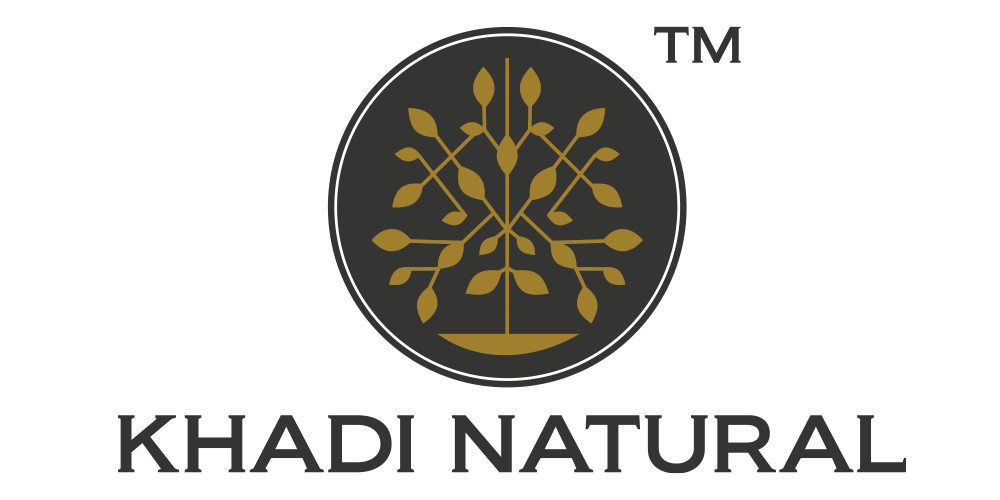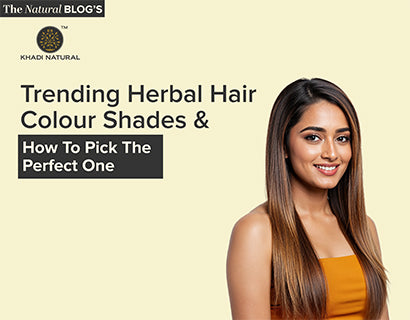
Why Choose Natural Hair Colours? Benefits & Ayurvedic Ingredients
Hair colouring is more popular than ever. Whether you're covering greys, adding a fashionable touch, or just experimenting with a new look, colouring your hair is a fun way to express yourself. But have you ever stopped to wonder what’s really in your hair dye?
Many commercial hair dyes contain chemicals like ammonia, parabens, and sulphates that can damage your hair and scalp over time. If you’re looking for a safer, gentler alternative, natural hair colours might be the perfect choice.
Let’s explore the benefits of natural hair colours and discover how Ayurvedic ingredients play a key role in giving you beautiful, healthy hair without compromise.
Table of Contents
What are Natural Hair Colours?
Natural hair colours are made from plant-based ingredients rather than harsh chemicals. These colours use herbs, flowers, leaves, and roots to colour hair gently. They're often free from ammonia, peroxide, parabens, and other artificial additives.
Instead of breaking open the hair shaft like chemical dyes do, natural hair colours coat the hair and gently stain it. This makes them much safer for long-term use.
Natural Hair Colours Benefits
Here are some of the top reasons why more and more people are switching to natural hair colours:
1. Gentle on Hair and Scalp
Chemical dyes can irritate the scalp, cause dryness, and make your hair brittle. Natural dyes for hair, on the other hand, are much gentler. Since they’re made with herbal ingredients, they nourish your hair rather than strip it of natural oils.
2. No Harsh Chemicals
One of the biggest advantages is the absence of harmful chemicals like ammonia and parabens. Ammonia, for instance, opens up your hair cuticle to deposit colour but also leads to moisture loss and long-term damage. Natural dyes for hair skip all that while offering a safer alternative.
3. Better for Sensitive Skin
People with allergies, eczema, or scalp sensitivity often react badly to synthetic dyes. Natural hair colours are much less likely to cause irritation or allergic reactions, especially when made from Ayurvedic ingredients known for their soothing properties.
4. Environmental Benefits
Most synthetic dyes can pollute water and harm the environment. Natural hair colours for women are biodegradable and made from renewable plant sources, making them a more eco-conscious choice.
5. Supports Hair Health
Natural colours often double as hair treatments. Many ingredients used in them, like henna, amla, and bhringraj, not only colour your hair but also strengthen it, reduce dandruff, and improve hair texture.
Common Ayurvedic Ingredients in Natural Hair Colours
Ayurveda, the ancient Indian science of wellness, has used herbs for thousands of years to promote hair health. Here are some Ayurvedic hair dye ingredients often found in natural hair colour formulations:
1. Henna (Lawsoniainermis)
Henna is one of the oldest ayurvedic hair colour dyes. It provides a reddish-brown tint and also conditions the hair, leaving it soft and shiny. Henna is also known for balancing the scalp’s pH and controlling dandruff. So, if you like, you can check out Khadi Natural’s Herbal Henna.
2. Indigo (Indigofera tinctoria)
Used with henna, indigo is a hair colour ingredient gives darker shades like brown and black. It’s a 100% natural dye that helps strengthen hair and adds volume. When applied properly, Khadi Natural Herbal Indigo creates rich, deep colours that last.
3. Amla (Indian Gooseberry)
Amla is packed with vitamin C and antioxidants. It boosts collagen production, strengthens hair roots, and slows down premature greying. Amla also helps in creating cooler tones in natural hair dyes without chemicals.
4. Bhringraj (False Daisy)
Known as the “king of herbs” for hair, bhringraj promotes hair growth, reduces hair fall, and improves natural colour retention. It’s often included to enhance the overall health of your scalp.
5. Brahmi (Bacopa Monnieri)
This calming herb nourishes the scalp and prevents split ends. It also strengthens hair follicles and helps reduce stress-related hair loss.
6. Neem (Azadirachta indica)
Neem has antibacterial and antifungal properties. It helps combat dandruff, itchiness, and scalp infections. Including neem in hair colours ensures a clean and healthy scalp environment.
7. Shikakai (Acacia concinna)
This natural cleanser has been used in India for centuries. Shikakai gently cleanses the scalp, adds shine, and makes hair more manageable.
How to Use Natural Hair Colours?
Using natural hair colour at home is quite easy, though it may take slightly more time than chemical dyes.
Basic Steps:
-
Prepare the powder: Mix your herbal hair colour powder (like henna or a henna-indigo blend) with warm water to make a paste.
-
Let it rest: For many natural dyes, resting the paste for a few hours helps activate the colour.
-
Apply on clean hair: Apply the paste evenly to clean, dry hair. Cover with a shower cap or wrap to keep it moist.
-
Let it sit: Leave the colour on for 1–4 hours, depending on the depth of colour you want.
-
Rinse: Wash off with water (no shampoo for the first 24–48 hours, so the colour can fully develop).
Natural dyes for hair can deepen over time and may require a couple of applications to reach your desired shade. The results are worth it: shiny, healthy, naturally coloured hair without damage.
Natural vs. ChemicalHair Colour: Quick Comparison
Let’s take a look at the quick comparison between natural and chemical hair:
|
Feature |
Natural Hair Colour |
Chemical Hair Colour |
|
Ingredients |
Plant-based, herbal |
Synthetic, chemical-based |
|
Hair damage risk |
Minimal |
High (especially with ammonia) |
|
Long-term use |
Safe and nourishing |
May cause dryness, hair fall |
|
Suitable for sensitive skin |
Yes |
Often causes irritation |
|
Environmental impact |
Eco-friendly |
Harmful to the environment |
|
Colour Range |
Earthy tones, natural blacks & browns |
Wide variety of shades |
Final Thoughts
Choosing natural hair colours is about feeling good too. With rich Ayurvedic ingredients and zero chemicals, natural hair colours without chemicals in India care for your hair while giving you beautiful, long-lasting results.
If you're tired of dryness, scalp issues, or the harsh smell of chemical dyes, now’s a great time to try an herbal alternative. Let nature do the colouring, and enjoy hair that looks and feels healthier every day.
FAQs
Q. Are natural hair colours really effective in covering grey hair?
Ans. Yes, natural hair colours made with ingredients like henna and indigo can effectively cover grey hair. However, they may require multiple applications to achieve full coverage, especially for very resistant greys.
Q. How long do natural hair colours last?
Ans. Natural hair colours usually last between 3 and 6 weeks, depending on your hair type, washing frequency, and the ingredients used. The colour fades gradually and naturally without harsh regrowth lines.
Q. Can I lighten my hair with natural dyes?
Ans. No, natural hair colours cannot lighten your hair. They work by coating the hair with pigment and do not contain bleaching agents like peroxide. They are best for darkening or enhancing your natural hair tone.
Q. Are natural hair colours safe during pregnancy?
Ans. In general, natural hair colours made from 100% herbal ingredients are considered safer than chemical dyes during pregnancy. However, always consult your doctor and do a patch test before use.
Q. How often can I use natural hair colour?
Ans. You can use natural hair colours as often as needed since they are gentle and nourishing. Many people use them every 3–4 weeks to maintain colour and improve hair health.









